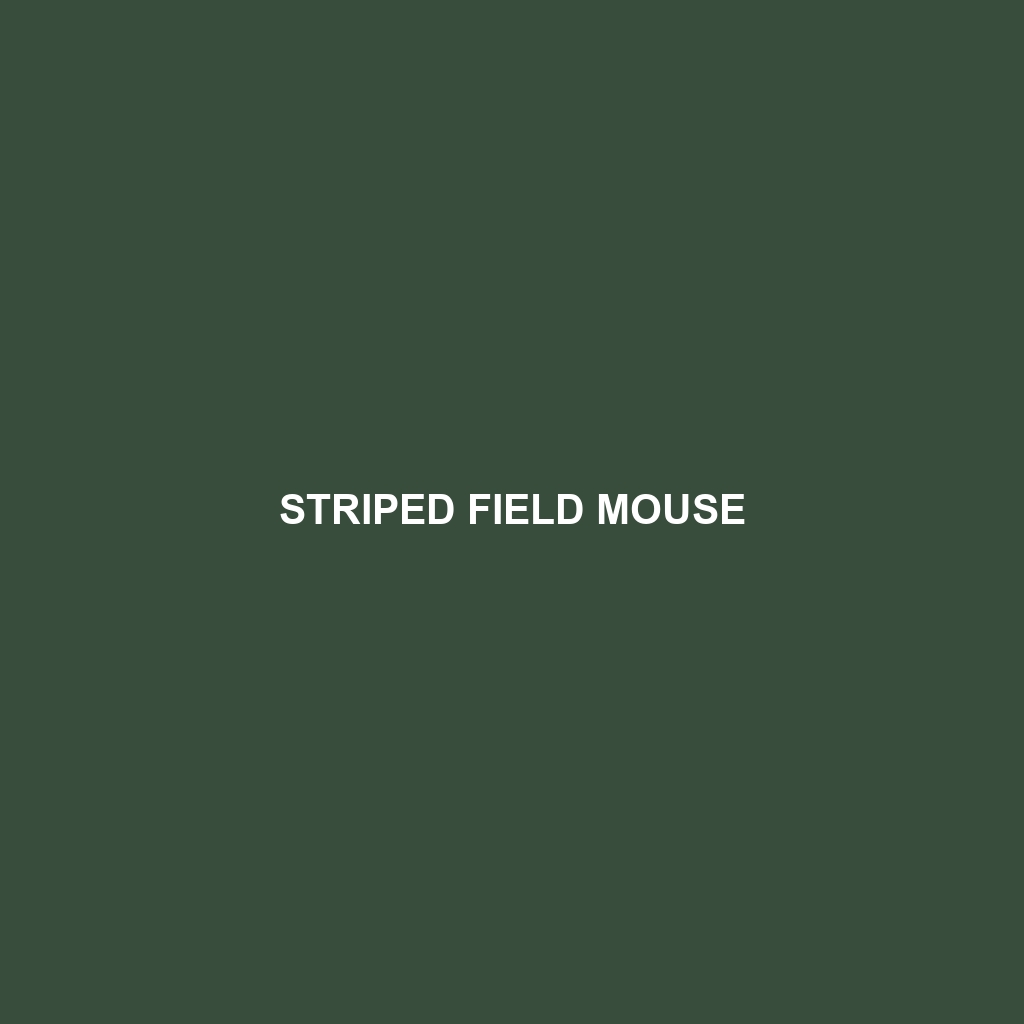Striped Field Mouse
Common Name: Striped Field Mouse
Scientific Name: Apodemus agrarius
Habitat
The Striped Field Mouse is primarily found across Eurasia, particularly in regions such as Eastern Europe, Central Asia, and parts of Northeast Asia. These mice thrive in a variety of environments, including grasslands, agricultural fields, and forests. They prefer habitats with dense ground cover where they can easily hide from predators.
Physical Characteristics
Striped Field Mice are small rodents, averaging about 10-12 cm in body length, with a tail that is often as long as the body itself. They exhibit a distinctive coat pattern characterized by a mix of brown and gray fur, often with a lighter underbelly. Notably, they have two dark stripes running along their back, which provides them with excellent camouflage among grasses and foliage.
Behavior
These mice are primarily nocturnal and exhibit crepuscular activity, being most active during dusk and dawn. Striped Field Mice are known for their agility, which aids in escaping predators. They often create complex burrow systems that serve as nests, storage areas, and shelters. Socially, they can exhibit both solitary and group behaviors, depending on environmental conditions.
Diet
The Striped Field Mouse is an omnivorous feeder, primarily consuming seeds, grains, fruits, and occasionally insects. Their feeding habits make them an important species in seed dispersal, helping to promote plant growth in their habitats.
Reproduction
Striped Field Mice have a prolific breeding season that typically spans from March to September. Females can produce multiple litters each year, with an average litter size of 4-7 young. The offspring are born blind and hairless, gradually becoming independent within a few weeks.
Conservation Status
Currently, the Striped Field Mouse is classified as Least Concern by the International Union for Conservation of Nature (IUCN). However, habitat destruction and agricultural development pose potential threats to their populations in certain regions.
Interesting Facts
One fascinating aspect of the Striped Field Mouse is its ability to adapt to urban environments. They can often be found in gardens and parks, showcasing their versatility as a species. Additionally, their quick reproduction rates contribute to their stable populations in favorable habitats.
Role in Ecosystem
The Striped Field Mouse plays a critical role in its ecosystem as both a prey and a seed disperser. They serve as a food source for various predators, including birds of prey and small mammals. Their activities contribute to soil aeration and nutrient cycling, which supports plant health and biodiversity.
